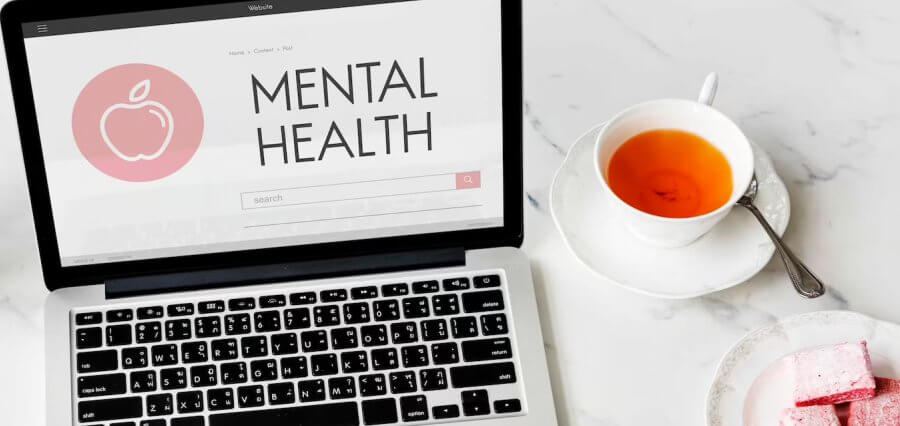Mental health is a major topic of conversation these days, and an even bigger challenge in the workplace. Whether you are a CEO or an employee, it’s important to recognize the importance of mental health at work.
It’s time for us to take proactive steps to make sure our workplaces are safe, healthy and supportive environments that allow us to tackle mental health head on. In this article we will provide some practical tips on how to address mental health at work. Through simple but powerful steps, we can create effective strategies to ensure everyone in our workplace is able to thrive and enjoy a positive work-life balance.
So let’s get started! Here are our top tips for taking on mental health at work – have a read and see what resonates with you!
Warning Signs
We all have mental health days—we feel down, anxious or overwhelmed due to personal life events or workplace stress. But recognizing the difference between a tough day and mental illness can be a challenge.
It’s important to know the warning signs of deteriorating mental health. These include changes in behavior, such as social withdrawal, mood swings, declining work performance and impaired decision-making skills. Some individuals also become withdrawn and prefer to be left alone. If you observe any of these signs in an employee, it may be a sign of deteriorating mental health.
Another red flag is when an employee displays out-of-character behavior, such as taking extra long breaks, coming in late more often than usual or engaging in disruptive behavior like arguing with colleagues. Pay special attention to any sudden changes in appearance—for instance, if an employee usually wears bright colors but suddenly wears all black for weeks on end. They also might talk about feeling overwhelmed, lonely or having no energy or motivation—all of which are indicators that something isn’t right.
These are just a few signs that could indicate poor mental health at work—always listen with empathy and be prepared to intervene if necessary.
Establishing Effective Communication
When it comes to tackling mental health at the workplace, communication is key. We understand that it might feel like a tricky situation to mention, but this is an important step that can help create a safe environment for employees.
There are a few ways to go about building effective communication between your team and those facing mental health issues:
- Encourage open & honest conversations: Creating an open dialog between employees and management about their mental health experiences can be beneficial. Show your team members you care by expressing interest in their wellbeing, and be sure to provide support when needed.
- Bring in experts: You might want to bring in outside professionals such as therapists or counselors who are specialized in work-related mental health issues and can offer insight on how to support employees in the workplace.
- Offer Training & Resources: Consider offering mental health trainings or providing access to resources such as self-care tips, meditation guides and more so that everyone knows where they can find help if they need it.
Handling Disciplinary and Performance Issues
When it comes to disciplinary and performance issues in the workplace, employers need to approach these situations with an open mind and understanding. It is important to recognize that mental illness can be a contributing factor in an employee’s struggle at work, which is why it’s essential to be mindful of their mental health when dealing with these issues.
Here are some tips on how to handle such cases:
- Take the time to understand what is going on with the employee—speak with them one-on-one and offer support.
- Remain empathetic regardless of any missteps that might have been made.
- Acknowledge the effort they’re putting in, instead of getting stuck on small details, like missing deadlines or small mistakes.
- Break down tasks into more manageable chunks to help reduce stress and increase efficiency.
- Offer training opportunities for employees to learn new skills or techniques for better performance.
- Conduct regular check-ins with the employee’s manager to track progress and provide feedback on areas that need improvement.
- Ask employees for their input on solutions; listening and responding constructively will encourage them to become part of problem solving efforts.
Working Together to Create an Inclusive Environment
Making sure that everyone feels safe, accepted and respected in the workplace is key to having a mental health-friendly environment. Here’s what you can do to make sure that the workplace is inclusive for everyone:
Lead by example
It all starts with being an example to your colleagues and employees, and showing them that there’s no judgment whatsoever when it comes to mental health. If you show that there’s a safe space, they’ll be more likely to reach out if they’re struggling.
Focus on positivity
Try to create an atmosphere of positivity, where people can talk openly about any issues without fear of being judged or judged. Aim for a culture of openness and understanding, rather than one of negativity or avoidance.
Create open channels for feedback
Provide anonymous surveys or discussion groups for employees to express their views on the company’s policies towards mental health. Make sure these channels are monitored so any issues can be addressed quickly and efficiently.
Have accessible resources available
Make sure that your employees have access to mental health resources such as counseling services, referral programs, workshops, and support networks both inside and outside the workplace. Everyone should be able to access help if they need it.
Conclusion
You can take on mental health at work one step at a time. Starting conversations, creating supportive policies, and recognizing the signs of mental health issues in the workplace can be daunting, but they’re also necessary steps to make sure everyone has a safe, comfortable and productive workplace.
By creating an open, supportive and understanding environment, you can help break down the stigma associated with mental health issues, and create a place where everyone feels free to talk about their mental health needs. It may be hard to create these changes, but it’s worth it for the rewards and benefits that come from a healthier, more productive workplace.















